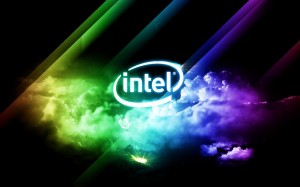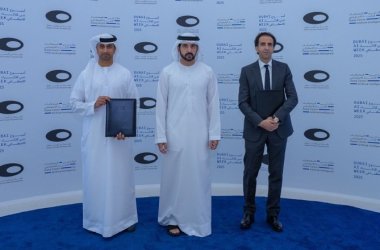Intel on Monday said it is developing high-performance server chips that in the future will serve up faster results from cloud services or data-intensive applications like analytics, all while cutting electricity bills in data centres.
The chip maker will integrate a converged fabric controller inside future server chips, which will make server communication faster while helping data centres operate at peak efficiency, said Raj Hazra, vice president of the Intel Architecture Group.
Fabric virtualises I/O and ties together storage and networking in data centres, and an integrated controller will provide a wider pipe to scale performance across distributed computing environments.
The integrated fabric controller will appear in the company’s Xeon server chips in a few years, Hazra said. He declined to provide a specific date, but said the company has the manufacturing capability in place to bring the controller to the transistor layer.
The controller will offer bandwidth of more than 100 gigabytes per second, which will be significantly faster than the speed offered by today’s networking and I/O interfaces. The chips have enough transistors to accommodate the controllers, which will only add a few watts of power draw, Hazra said.
Companies with huge Web-serving needs like Google, Facebook and Amazon buy servers in large volumes and are looking to lower energy costs while scaling performance. Fabrics connect and facilitate low-latency data movement between processors, memory, servers and endpoints like storage and appliances. Depending on the server implementation and system topology, fabrics are flexible and can organise traffic patterns in an energy-efficient way, Hazra said.
For example, analytics and databases demand in-memory processing, and cloud services rely on a congregation of low-power processors and shared components in dense servers. An integrated controller will help fabrics intelligently reroute or pre-fetch data and software packets so shared endpoints work together to serve up faster results.
HPC or high-end server environments may use a fabric with a mix of InfiniBand, Ethernet networking and proprietary interconnect technologies, while a cloud implementation may have microservers with fabric based on standard Ethernet and PCI-Express technologies.
Fabric controllers currently sit outside the processor, but integration at the transistor level also reduces the amount of energy burned in fetching data from the processor and memory, Hazra said. The integrated controller in the CPU will be directly connected to the fabric, and will also make servers denser with fewer boards, cables and power supplies, which could help cut power bills, Hazra said.
Intel for decades has been integrating computing elements at the transistor level to eke out significant power savings and better performance from processors. Intel has integrated the memory controller and graphics processor, and the fabric controller is next, Hazra said.
“That’s the path we’re on with fabrics,” Hazra said. “Integration is a must.”
Intel’s processor business is weakening partly due to a slowdown in PC sales, and the company’s profits are now being driven by the higher-margin data centre business. Intel’s server processors already dominate data centres, and integration of the fabric controller is a key development in the company’s attempts to bring networking and storage closer to servers.
Intel has quietly been integrating the fabric controller on chips and made a series of acquisitions to boost its interconnect and networking portfolio, Hazra said. Intel bought privately held networking company Fulcrum for an undisclosed price in July last year, acquired InfiniBand assets from Qlogic $125 million in January this year, and then purchased interconnect assets from Cray $140 million in April.
Intel’s rival Advanced Micro Devices has its own fabric technology acquired from SeaMicro, a server company it purchased for $334 million [M] this year. Prior to the acquisition, SeaMicro previously developed microservers with Intel and was subject to rumours of acquisition by the chip maker. But soon after AMD acquired SeaMicro, Intel said it was working on its own fabric and had no interest in the SeaMicro’s fabric technology.
AMD is now selling SeaMicro-branded servers technology and has plans to put the fabric, called Freedom Fabric, in products ranging from dense servers to supercomputers. AMD executives have hinted they will integrate the fabric controller inside chips. AMD is expected to make an announcement around its SeaMicro products on Monday. Server chip maker Calxeda also has a system-on-chip called EnergyCore that packs ARM processor cores with a fabric switch.






